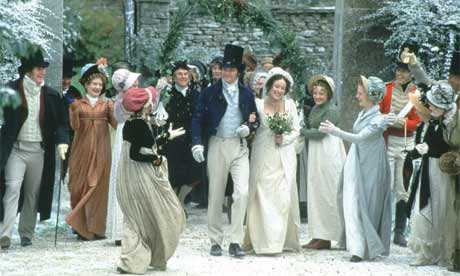Analysis: 3/20 14/20
Examples: 5/20 14/20
Terminology: 3/10 6/10
Targets:
- focus on explanations
- focus on sound and music
- consider editing and mise-en-scene more
- use the 4 areas as subheadings

Both have a wide ranging, love & war, birth & death, rich & poor, ... .
The costume drama is a period piece which uses sets and props and elaborate costumes in order to capture the ambience of a particular era
Sets:
Props:
Different genres:
Costume Drama is often intertextually linked to ´classic´ novels or plays and tends to offer a set of pleasure which is very different to the drama that is set in our own world contexts and times.
Examples:
Hyperlinks:
http://www.screenonline.org.uk/tv/id/482184/index.html
http://www.itv.com/Drama/perioddrama/TheStoryoftheCostumeDrama/
Normally 5 key binaries: